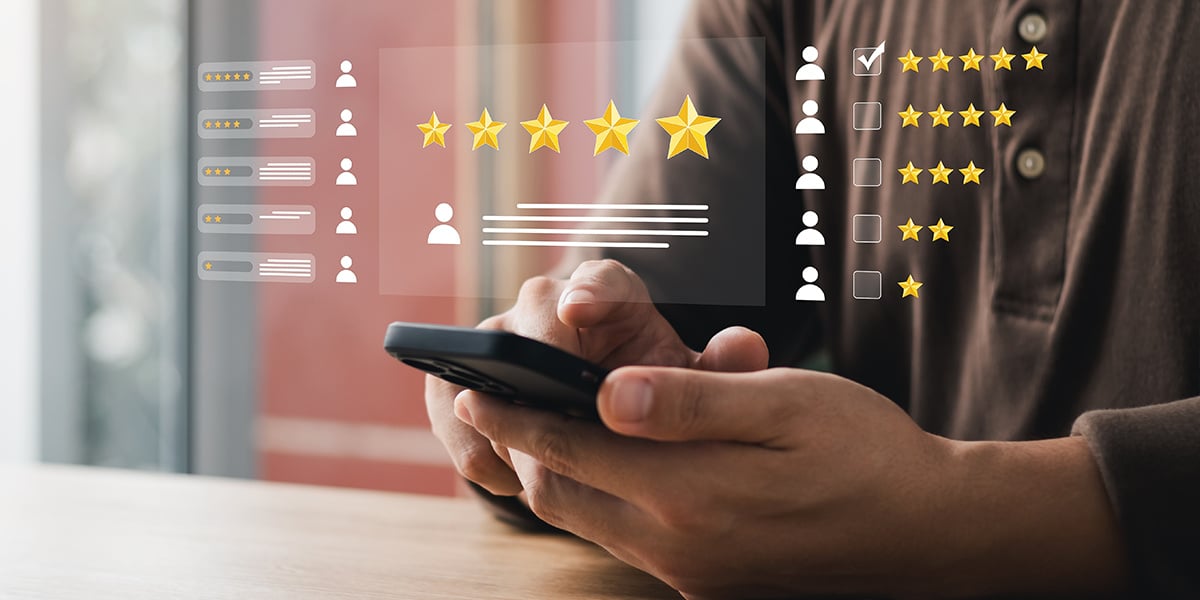Episode 56 Michael Solomon, a Professor of Marketing at St Joseph’s University in Philadelphia, adapts traditional marketing techniques to the needs of postmodern consumers, the new chameleons. Michael advises CX leaders on how to connect with consumers who do everything they can to escape stereotypically targeted campaigns. Other topics discussed are technological advancements, humanoid robots and the Uncanny Valley theory.
Episode 56
Episode Summary
Why traditional marketing segmentation doesn't work anymore.
According to Michael Solomon, in today’s post-modern society, it is very dangerous to put people in large groups, give them a label, pretending to understand them, and to think that everyone in the groups is identical and has the same needs and desires. People are much more individualistic and are expecting more proactivity from businesses, as “they no longer want to be marketed to, they want to be marketed with, and become part of the process”.
Each person can be considered as a market of one, and even one person can be very fragmented as people now sample experiences from different styles, finding it hard to be confined to the traditional expectations marketers have of them.
In his new book, Michael defines today’s consumers as the new chameleons, as they are constantly changing their identities and are much more flexible and dynamic than how it used to be.
The consequent failure of linear models.
Within this environment, linear models of consumer behaviour and marketing don’t hold up anymore. An example is the linear purchase decision-making model, which Michael refers to as having locked steps, that does not reflect the actual decision-making journey that consumers undertake when buying products.
)%20(1).jpg?width=6912&name=Colorful%20Minimalist%20Linear%20Steps%20Circular%20Diagram%20(Banner%20(Landscape))%20(1).jpg)
Firstly, instead of waiting for a need or a problem to arise, today’s “always-on consumers” are in a constant stage of information search, that is not always active and conscious. Social media for example plays a big role in being an information source 24/7 as it promotes products and services that people had no thought of buying. Consumers are therefore constantly sending and receiving information and feedback, so it all becomes about collective decision-making, which is not considered in the traditional model.
The fusion of human beings and machines.
According to Michael Solomon, we are inevitably heading towards a cyborg existence of robots and humans, in which they both take typical characteristics of the other group. More and more robots are becoming humanlike, and more people are experiencing working and living with robotic tools as an extension of their human bodies. In the short term and practical sense, Michael believes this to be a positive experience, as there are many benefits to the implementation of humanoid robots in sectors like healthcare, but the real problem he keeps asking himself is if we are going to be able to distinguish between humans and machines, and the ethical implications they might have.
This article summarises podcast episode 56 ” How to Connect With Customers Who Defy Categorisation" recorded by CX Insider. For more information, listen to the episode or contact Michael on his LinkedIn profile.
Written by Alessia Trabucco
Full episode transcript
Michael: Back in the sixties and seventies, you know, we lived in a broadcasting media environment, whether in the U.K. or the U.S. or other countries, you know, there were a couple of major television stations that pretty much captured all of the viewership. And when you fast forward to today with cable and you know, all of the options that are available on social media, we're very much in a narrowcasting media environment which means that it's actually quite possible to and companies do this, some companies do this, it's very possible to customize and personalize the messages and products that we sell to people based on their individual characteristics and needs. So sometimes we refer to this as a market of one. We each are a market.
Valentina: Hello, everybody, and welcome to another CX Insider podcast episode. In today's episode, I will talk with Michael Solomon about traditional and postmodern marketing, the complex decision-making processes of today's consumers, and the rising demand for humanoid robots.
Hello, everyone, again, I hope you all had a lovely weekend and enjoyed one of the last moments of late summer, depending on which country you're in. In today's episode, I interviewed a very interesting guest, Michael Solomon, who is a professor of marketing at St. Joseph's University in Philadelphia and an industry consultant, a keynote speaker, and an author of textbooks on consumer behaviour, fashion psychology, social media, marketing, and advertising. He's an expert in his field and has been advising big brands like Calvin Klein, BMW, or eBay on how to understand their customers. I read Michael's latest book called "The New Chameleons: How to Connect with Consumers Who Defy Categorization", and I must say the premise of the book is quite challenging in the way most traditional marketers think.
Michael: You know, I do a lot of keynote talks to organizations, and of course, as you might expect, I get a lot of requests for the future, you know, what are the trends that we need to be looking at, whether COVID or related or more generally? And as I started to put together a few of these talks, I realized that many of the basic assumptions that we make about customers really are no longer valid in what we might call a postmodern world where traditional labels and categories really don't make as much sense anymore. And I started to look at this and realized I identified a fairly long list of even some very basic dichotomies that we all use and mea culpa, I teach them to my students as well. Basically, you know, we kind of questioning the wisdom of putting people into fairly large, homogeneous groups and thinking that if we assign them this segmentation label we understand them and furthermore, assuming that everybody we put in that group is pretty much the same, and the evidence is that that's no longer the case, and we could talk about some of the specific dichotomies, but just in terms of segmentation in general, you know, today compared to 20 or 30 years ago, for a variety of reasons, we're all much more individualistic than we used to be. And what I've sensed is a growing desire for proactivity among customers, that is, they no longer want to be marketed to, they want to be marketed with, so they want to become part of the process.
Michael: And so right there, that kind of obliterates one of the basic dichotomies I talk about, which is producers and consumers. And so for example, when you look at the gig economy and all of the ways that consumers actually are taking on marketers' roles today, you can see that it's a very dynamic and changing environment. And it's actually probably harmful in some ways to just put people into these big categories because they're not going to want to be there. And so, you know, I developed this metaphor of a chameleon because of course, as we all know, chameleons change their colours to adapt to changes in the environment, and they can do that very quickly. And so, I think in a way, many of us are new chameleons in that we're changing our identities constantly. And as we change these identities, whether it's, you know, in terms of choosing from different lifestyles, different things that we that we are exposed to online, perhaps that we wouldn't see in our physical worlds, we really are much more flexible and dynamic than I think a lot of marketers give us credit for.
Valentina: As you know, marketing segments are usually based on categories like demographic, psychographic, and so on. And once you find a group of people of similar characteristics, you give them a label. Late millennials, affluent millennials, millennial Henry's yuppies boomers. But these stereotypes don't always fit. How, for example, how would you label a traditional feminine woman buying T-shirts in the men's section or Gen Z's wearing skinny jeans? The most paradoxical term I am personally aware of, I would say, is flexitarian. And for those who don't know what it is, it means an occasional vegan. Basically, a person who eats what they want. In reality, I do think that most flexitarians wouldn't actually define themselves as flexitarians, but to put this into context in 2021, when more and more people are starting to realize they don't fit into their prescribed genders and identities are constantly evolving, it is courageous to think of consumers as segments and not individuals. That being said, our brains are wired to categorize things just to make sense of the world around us and to make it easier to learn. But how do we move from marketing to many to marketing to one?
Michael: Well, of course, the first answer always goes to technology because, you know, it goes without saying we've seen some pretty major changes there in the last 20 or 30 years. But if you think about it back way back before you were born, back in the sixties and seventies, you know, we lived in a broadcasting media environment, whether in the U.K. or the U.S. or other countries, there were a couple of major television stations that pretty much captured all of the viewership. And when you fast forward to today with cable and you know, all of the options that are available on social media where we're very much in a narrowcasting media environment, which means that it's actually quite possible to and companies do this, some companies do this, it's very possible to customize and personalize the messages and products that we sell to people based on their individual characteristics and needs. So sometimes we refer to this as a market of one. We each are a market. With the technology that we had in the sixties and seventies, we couldn't do anything about that. And at that time we hadn't splintered in the way our culture hadn't fragmented or splintered the way it is now. But today we clearly are very fragmented, and many of us are looking to sample experiences from other lifestyles, other parts of the world and largely thanks to the internet, but also, you know, the ease of travel, COVID being hopefully a temporary bump in the road there, but so many of us have the opportunity to encounter people and lifestyles in other parts of the world, that it's hard for us to just be confined to our traditional expectations, so it's a very different world that we live in today.
Valentina: Technology is allowing us to make our decisions differently. Do you also sometimes sign up to receive the latest deals and discounts on products you might potentially buy? And so, you happen to collect and evaluate the information about a certain product before you recognize the need or motivation to buy it? Today, the decision-making model looks more like a tree with a very rich and complex crown rather than a linear process.
Michael: There's been an enormous amount of research done over the years on this linear model that you're referring to, and it's still valid in some cases, but we don't live in a linear world anymore, particularly for younger people, you know, it's all about hyper clicks and things like that. So, this idea of doing things in lockstep really often doesn't hold up anymore, and the same is true for making decisions. So this traditional model assumes that, first of all, we're motivated to solve a problem, and so our process begins when we realize we have a problem and it can be a minor problem like I ran out of milk or it could be a major problem like, you know, I need to define what my career is going to do next. But regardless of the problem, we then look for information to help us solve the problem, we usually narrow down our options to a few alternatives. We, according to the model, anyway, we coolly and calmly assess the pros and cons of each, much like a computer, would make a decision and then evaluate the quality of that decision. Well, the problem with that is that, for example, where many of us are in a constant stage of information search today, whether we want it or not, we're getting enormous amounts of information from our networks, our social media, giving us recommendations about what to buy, cautions about, what to avoid. And so it's not that we're waiting to solve a problem to search for information. We're doing it all the time. So, we, you know today what I refer to in the book as the always-on consumer is somebody who's not waiting for a need to arise like I need to buy a new blouse today, because people are constantly sending this information and acting on it and giving feedback. And so, what we tend to observe today, I think, is more of a circular or at least a non-linear process where there's this constant flow of information, I should say many flows of information, that we tap into and we kind of tap into those and tap out of them in and out, in and out all day long and perhaps all night long. And so this model of the rational decision-maker who goes through the series of steps is probably not valid for any purchases. And another difference is that under the traditional perspective, although we certainly acknowledge that other people influence what we decide to buy, it's really a model of a lone decision-maker. And today that really isn't the case, you know, a lot of people are, you know, as I like to say, we've moved from the era of me to the era of we. And so, it's much more about collective decision-making, and the traditional model doesn't really reflect that very much.
Valentina: I remember when I was a child and social media was a new thing, whatever happened on those platforms stayed on those platforms, whereas today social media is an extension of our social lives, it's a blended reality. You are in the process of making a purchase decision and the members of your reference groups influence your decision enormously. But where are they? They are on Pinterest, Instagram, WhatsApp School work. As Michael says in his book, it now takes a whole village to buy a prom dress. And conversely, consumers post about their decisions in their lives and social media to get validation from other people. It's way more complex network than it used to be in the past.
Michael: I find that people need to validate their existence, you know, constantly, I've had students telling me, I think I even wrote this in the book that, you know, they weren't aware that their partner broke up with them until they read about it on Facebook. You know, and I don't know, I think that we're probably unnecessarily complicating things to some extent, but you know, each to his own, I guess.
Valentina: In many of our episodes, we often touch on artificial intelligence and automation. We discuss consumer responses to chatbots or robotic customer service agents. But what about humanoid robots? Is it really science fiction still? Are we ready for Sophia from Hanson Robotics to become a member of our household?
Michael: I don't think we're ready quite yet, but I'm not sure that it's going to be quite that draconian. You know, I think as I write about it in that chapter, I'm talking about the merger or the fusion of humans and machines. For example, many of the devices that a lot of people have literally in their bodies, you know, hip implants and pacemakers and things like that, and on the other hand, you have machines that are becoming more human-like, you know, androids and some of these robots that have been introduced already into the marketplace that exhibit very human-like qualities. So I think we're heading more towards a kind of a cyborg existence. And a cyborg is widely used in science fiction but it's a science fact today, you know, is a combination of both human and machine elements, and I think we've reached that point. So it's not whether we're so much going to reject what computers tell us. It's are we going to know whether they are computers or whether they are flesh and blood?
Valentina: Whether we could recognize the difference between a robot and a human being is one thing, and we'll talk about the uncanny valley in a moment, but could they actually replace a human is the other thing. Let me give you a couple of examples. The University of Hertfordshire has created a humanoid robot called Casper to help autistic children learn social skills. With a current trial evaluating the effectiveness of these robots, there is a big potential they could be implemented across the NHS. Another study conducted by researchers from the University of Bedfordshire, Middlesex, and Advinia Healthcare investigated the effect of socially assistive robots on older people experiencing loneliness. The study reported significant improvement of this condition. The first question we might ask is to what extent could these robots replace the human connection and the other? What are the ethical implications of marketing these machines as a suitable human replacement in social interactions?
Michael: Yeah. Well, you know, the ethics of it are maybe a bit troublesome. But you know, let's start with the basic contention. You know, the reality is that we've always looked at products as if they were our friends and what I mean is that we find in research that people form relationships with brands that very strongly resemble those that they have with other people. Sometimes they love them, sometimes they hate them. Sometimes it's a master-slave relationship where you're a slave to your laptop or something like that. And so people always have that tendency to infer human characteristics to products and that's a major part of branding strategy, in fact. And so this is really not as disruptive as it first sounds, although I'll grant you that this is a bit more extreme. I think that there are a lot of very positive potential consequences here. I'm not sure that we're ever going to replace human caregivers, but when you look at caregiving as an activity and you know, I'm sure it's similar in the UK, I know in the U.S. something like 25% of all adults are caregivers. It's a very stressful job with a lot of burnout, you know, and that's not even the person who's getting the care, that's the person who's giving the care. And there are substitutes there in terms of every day when you're talking about alleviating loneliness or something like that, you know, people get attached to stuffed animals, you know, and I'm aware of older people, you know who I know who really do feel a lot better when they have just had a cat in their house and the cat doesn't talk back as far as I know.
Michael: So, you know, and when it gets, you know, the ethical issues probably enter in when you start to get back to your earlier question about cyborgs, you know, when you start to portray the machine as a person, then we have some interesting questions. You know, when does a machine become a person? When does a person become a machine? But in the short term, you know, in the practical sense, and I, you know, I don't pretend to be an expert on geriatrics or anything like that. But you know, we know I mean, there was a classic study many, many years ago in an old age home were just giving the resident of that home a potted plant to take care of that he or she had to water every day, had a tremendous impact on their mental health and their longevity. And that was just because they had something that they could interact with. So I think it's mostly positive. I don't mean to dismiss any of the ethical concerns that are applying more generally to humans and robots. But this is one of those cases that I think is probably a winning proposition, at least until we figure out another way to address these very glaring issues.
Valentina: Let's say we will implement socially assistive robots to care homes in the near future because there won't be enough caregivers. To what extent does the physical appearance matter in order to form trust with the consumer?
Michael: You know, having done the research for many years on service encounters and one of the factors being the appearance of a service provider, a human service provider, we know that the source of a message is extremely powerful, and people either believe a message or don't believe it, often based on who they think the source is. So there are, I'll try to give a short answer to a question that actually requires a longer one, but basically, we take a lot of information away from the appearance of the entity, whatever that is, that we're interacting with the person or machine. And so personalizing robots certainly helps to create a sense of trust and, you know, foster interactions. And, you know, I find it interesting, the same is true, by the way, for avatars, you know, online avatars that we see all over the place. You have companies that spend enormous sums of money to do research on exactly who their, let's say, celebrity spokesperson, should be. Because just because a person is famous doesn't mean that they're going to be an effective spokesperson for your brand. So they're very, very picky about that. But they don't seem to be very discriminating when it comes to choosing an avatar or what a robot is going to look like that's going to represent them. And I think that's a really, really big mistake.
Valentina: Have you ever seen The Lion King from 2019, Polar Express, or Sophia the robot? The one thing they all have in common is the degree to which they resemble a human being, and the degree is what many scientists call uncanny valley. How do those images make you feel strange and easy and comfortable?
Michael: Yeah, you know, that's the uncanny valley that people talk about, where it's really creepy to see an animated person who looks so real. Having said that, you know, I think that that is going to change because I think that people are getting much more used to the notion that they can see an animated character who is so lifelike. You know, when a lot of this stuff was done, this was back in the 1970s when people used to talk about the uncanny valley, but the ability to make that kind of simulation was so rare that it really flipped people out when they encountered it. You know, today when you look at some of the technology that basically can turn literally you into an avatar, and I've seen this, you know, in a number of places, it is very hard to distinguish from, you know, which is the avatar, which is the real person. And my guess is that especially young people today who have grown up understanding that just because a person looks realistic, maybe they're not flesh and blood, I don't know if that uncanny valley is going to persist, but I could be wrong. Only time will tell.
Valentina: Is it really just a matter of time until consumers get used to the novelty and will gradually build trust with humanoid robots? And how will this transform the concept of customer experience as we know it today? At the end of the day, Google assistants can already call a hair salon to make an appointment, and you wouldn't be even able to recognize the difference between a robot and a human.
Michael: You know, I think that customer experience is the latest frontier for us in marketing. Everybody's talking about it, which they should be. But I think we've only scratched the surface especially when we look at the interaction with these, with these technological interfaces, there's a lot more that we can do to understand both the marketing potential and also, as you so wisely pointed out, the ethical ramifications of a society where humans are robots and robots are humans to some extent.
Valentina: I hope you all enjoy today's episode, and if you did, please don't forget to like share a comment. Subscribe to the podcast on your favourite channel and follow us on LinkedIn and we can start a conversation. If you are interested in what Michael does, visit his website. Michael Solomon.com. Check out his latest book called "The New Chameleons: How to Connect with Consumers Who Defy Categorization", the link provided in the episode description, and I will see you in two weeks.






